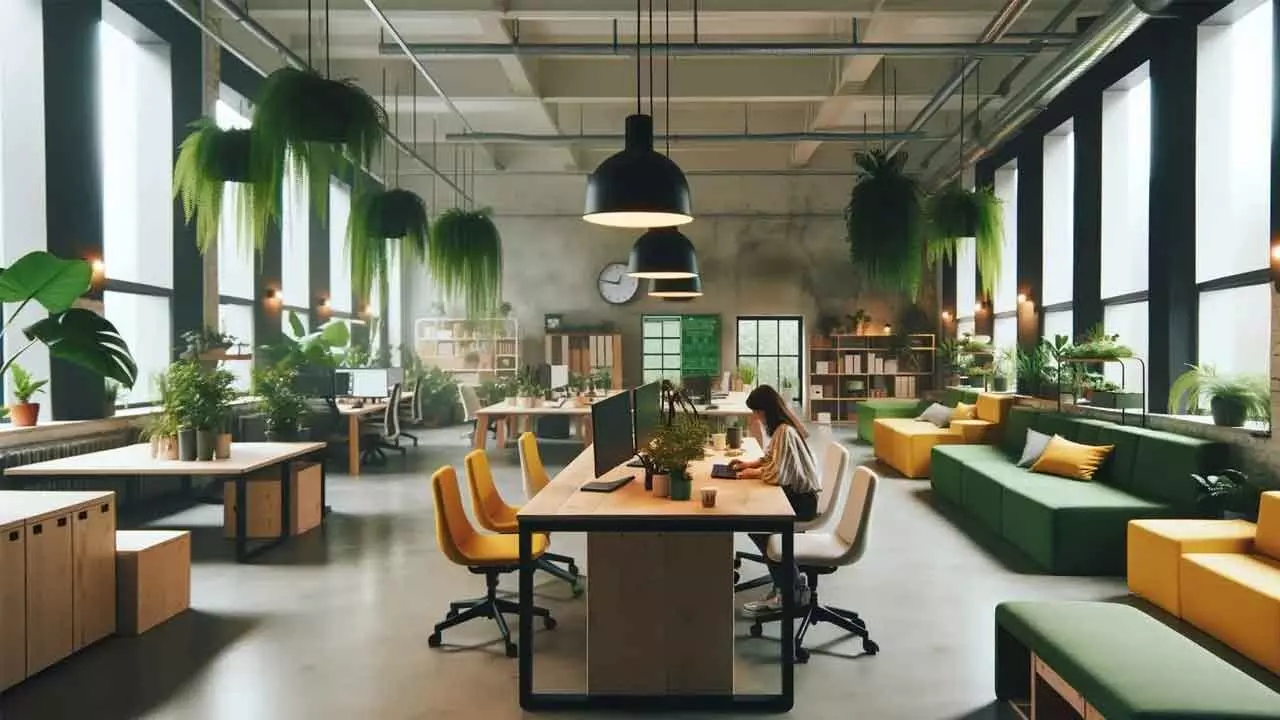Modern Offices Switch To Sustainable Spaces With Focus On Employee Well-Being
Modern Offices Switch To Sustainable Spaces With Focus On Employee Well-Being

Offices are now prioritising on employee well-being by creating Wellness-Centric spaces. They are incorporating features that promote physical and mental health, such as fitness centres, meditation rooms, healthy snack options and hydration stations, air purification systems, natural ventilation, and access to natural light and outdoor spaces – Abhishek, Co-founder, Elite Spaces
Hyderabad: Over the years, office spaces have evolved significantly transforming from cubicles to vibrant collaborative space that fosters creativity, productivity, and employee well-being. Today’s offices are prioritising on interior design elements that bring in flexibility, sustainability, and employee experience, reflecting the changing need of the workforce.
“Gone are the days of rigid cubicles. Modern offices incorporate flexible workspaces that cater to diverse work styles, including, open-plan areas for collaboration, private offices for focused work, co-working spaces for teamwork and breakout rooms for brainstorming,” Architect Abishek Raju tells Bizz Buzz.
Moreover, Raju says that offices are now prioritising on employee well-being by creating Wellness-Centric spaces. They are incorporating features that promote physical and mental health, such as fitness centres, meditation rooms, healthy snack options and hydration stations, air purification systems, natural ventilation, and access to natural light and outdoor spaces.
The interiors of offices have also been widely influenced by the IT boom in Hyderabad. The architect says that smart offices are seamlessly integrating technology to enhance productivity and efficiency by providing wireless charging stations, interactive whiteboards and digital displays, video conferencing facilities, intelligent lighting and temperature control.
Corporates in the city are finding office design incomplete without Virtual Reality (VR) and Augmented Reality (AR) integration, Raju says adding few examples such as VR meeting rooms, AR-enhanced training and education, immersive experience zones, and virtual collaboration tools.
Going hand-in-hand with technology integration translates to the use of sustainable, eco-friendly materials and practices. Many office building developers are drawing higher rental income by incorporating sustainability elements. Recycled and recyclable materials, energy-efficient lighting and HVAC systems, low-VOC (volatile organic compound) paints and finishes. Repurposed and upcycled furniture are highly preferred by corporates affirming sustainability goals.
Office spaces have also now become a space for brand storytelling and showcasing company culture and personality through custom artwork and installations, visual elements, colour schemes reflecting company values, unique furniture and decor. For green spaces, Raju says, companies are opting for Biophilic Designs. “Biophilia, or the love for nature, is increasingly influencing in office design. Natural elements are incorporated through live plants and green walls. As the modern office continues to evolve, these trends will shape the future of workspaces, prioritising flexibility, sustainability, and employee experience,” he concludes.

